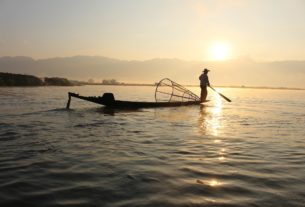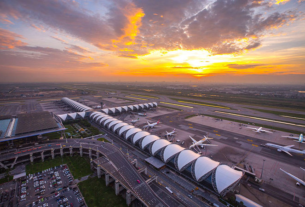Electric trains that ran in Japan for decades are being offered to Myanmar as part of efforts to upgrade the state-run railway network.
Although the technology is relatively old, it is new to Myanmar, which explained the presence in Japan of 10 employees of Myanmar Railways to learn how to strip an electric train engine and reassemble it again.
The team, which included mechanics, underwent training at the Hiroshima Electric Railway Co. in Hiroshima. The members arrived in Japan on March 18 and the training continued until April 11.
It was their first hands-on opportunity to learn the workings of electric trains–from scratch.
Myanmar’s rail network stretches about 5,800 kilometers, of which just six kilometers, located in the country’s largest city of Yangon, are electrified. Electrification arrived in Myanmar in January, courtesy of Japanese overseas development assistance.
Only two trains, both of which were provided by Hiroshima Electric Railway, are running on the 6-km portion of track. One is a 750 series train, manufactured in 1950, and the other is a 3000 series train dating to 1963.
The 750 series train used to run in Osaka and was operated by the Osaka city government, while the 3000 series train was operated in Fukuoka by Nishi-Nippon Railroad Co.
With more extensions of electrified track in the cards, the Japan International Cooperation Agency (JICA) set up the training session in Hiroshima for the 10 Myanmar Railways employees.
Myanmar Railways is anything but flush, which means it is unable to purchase expensive new train cars. So, it makes do with old rolling stock from Japan. But even then, its staff still have to master maintenance techniques of trains past their prime.
One man who has served as a bridge between Myanmar Railways and Hiroshima Electric Railway is Shigenobu Takamatsu, 73, a retired employee of West Japan Railway Co. (JR West) and now vice chairman of the Japan Myanmar Friendship Association.
In 1982, when he worked for the Japanese National Railways, the predecessor of JR West, Takamatsu was seconded to what was then Burma Railways as a technological cooperator. In the years since, he has liaised to offer diesel engine-powered train cars to Myanmar that are no longer being used in Japan.
Hiroshima Electric Railway operates a tramcar network that covers 19 kilometers in the city of Hiroshima. It carries more passengers than any other comparable network in Japan.
It operates many old-style electric cars, including one that was damaged in the Aug. 6, 1945, atomic bombing of the city.
The training sessions for the 10 Myanmar Railways employees included working on a car that was manufactured in 1957 and is still being used.
“I was surprised to see that even old electric trains can go on for so many years if proper maintenance work is done,” said May Zin Phyo, 32, a female engineer who is one of the trainees from Myanmar.
STRENGTHENING INFRASTRUCTURE
Myanmar is finally coming into its own after being ruled by the military for more than half a century. The National League for Democracy (NLD), led by Aung San Suu Kyi, inaugurated a new government on March 30.
This is expected to herald a period of high economic growth for Myanmar, which has earned it the monicker “Asia’s last frontier.”
Japan has embarked on strengthening relations with Myanmar through economic cooperation, keeping in mind that China is trying to raise its presence in the Indian Ocean.
In 2015, the Abe administration revised the Official Development Assistance (ODA) Charter, making it clear that, in providing ODA, Japan will put importance on its “national interests” in the fields of security and economy.
With regard to Myanmar’s new government, the Abe administration plans to increase its assistance in the fields of infrastructure, such as railways, roads and ports.
Since 2013, Japan has cooperated on a number of projects aimed at improving infrastructure in Myanmar. For example, it decided to provide yen loans worth 45 billion yen ($407 million) to upgrade the 620-km rail link between Yangon and the country’s second largest city of Mandalay, and a 47-km loop line in Yangon.
“The two lines correspond to the (important) Tokaido Line and Yamanote (loop) Line in Japan. Though China is also offering assistance to Myanmar, Myanmar’s expectations toward Japan are huge,” said a high-ranking official of the Japanese Foreign Ministry.
Source: http://www.asahi.com/ajw/articles/AJ201604160013.html


